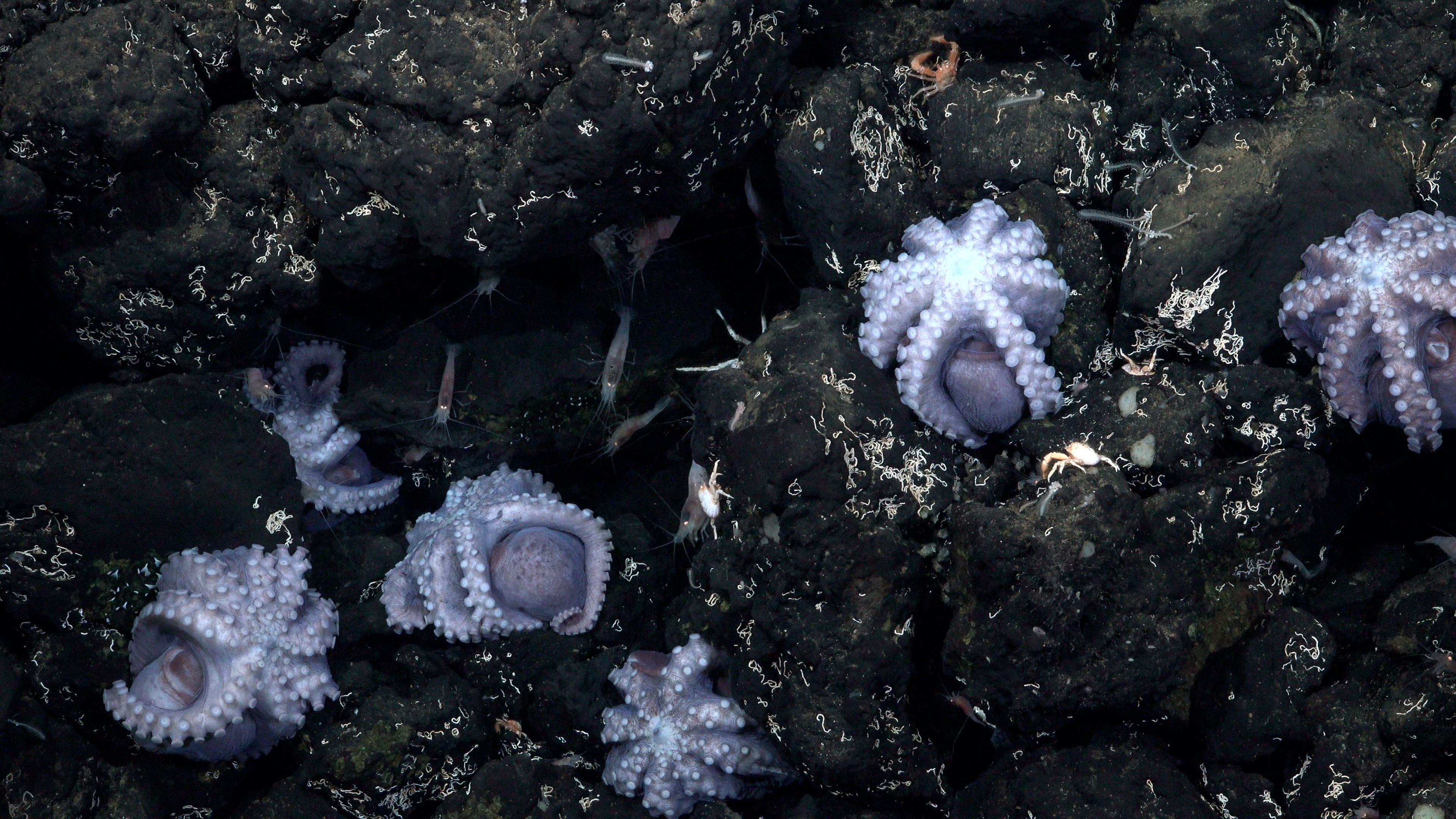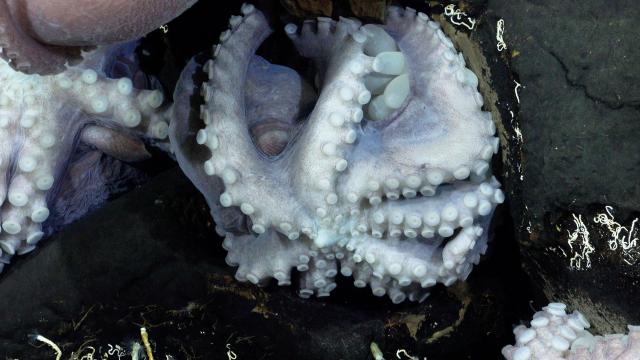Marine scientists appear to have found some more natural wonders of the ocean: not one, but two deep-sea octopus nurseries in the waters of Costa Rica. One of these nurseries was previously thought to be inhospitable for eggs to hatch in, while the other was undiscovered until now. The team of scientists also believe that the octopuses nursing there might be a novel species, and the area itself is teeming with other sea life.
Octopuses are generally considered to be solitary creatures. But there are some species known to be exceptions to this rule, and some circumstances where normally isolated octopuses will group together. In recent years, scientists have come across parts of the ocean filled with hundreds or more of octopus mothers protecting their eggs until they hatch — so-called nurseries. These gatherings are also sometimes called octopus gardens.
One of these potential areas was found a decade ago in the Dorado Outcrop, a relatively small rock formation (about the size of a football field) around 3,000 meters deep in the waters of Costa Rica. Early on, though, the nursery was believed to be doomed. Deep sea octopuses thrive best in the cold. But the Dorado Outcrop is next to a hydrothermal vent — fissures where fluids heated by the Earth’s crust are released. And while the vent is relatively low-temperature, the waters nearby are still warmer than usual.
During the first expeditions to the area, scientists only found undeveloped eggs, indicating that the octopuses were unfortunately drawn to a place where new life wasn’t possible. To add more tragedy to it, octopus mothers usually stop eating after they successfully mate and will only live l0ng enough to protect their eggs until they hatch (octopus fathers also typically die soon after mating).
Researchers have since made other attempts to explore the Dorado Outcrop and the neighbouring region. The latest was a 19-day expedition helmed this month by an international team of scientists from the U.S., Costa Rica, and other Latin American and Caribbean countries. It was aided by the use of the Schmidt Ocean Institute’s research vessel Falkor (too) and its underwater robot, ROV SuBastian. The team expressly wanted to revisit the area where the octopuses were first discovered.
As before, the team came across plenty of octopus mothers. But this time around, they saw eggs successfully hatching, disproving the idea of a completely doomed nursery. Amazingly, they found another unnamed outcrop near a low-temperature vent where octopuses were protecting their eggs, also known as brooding. This discovery, if confirmed, would make the site the third deep sea octopus nursery ever found, after the Dorado Outcrop and a nursery found in the waters of California.

“The discovery of a new active octopus nursery over 2,800 meters beneath the sea surface in Costa Rican waters proves there is still so much to learn about our Ocean,” said Schmidt Ocean Institute Executive Director, Dr. Jyotika Virmani, in a statement from the organisation.
The octopuses found in the region are likely members of the Muusoctopus genus, small to medium-sized octopuses that don’t produce ink. And the team believes that they might have discovered a novel species of Muusoctopus. The expedition also got to explore five previously undocumented seamounts (underwater mountains formed by volcanic activity) in the region, filled with hundreds of species, including some likely not known to humans until now.
It will take time for the researchers to formally publish their findings from their Octopus Odyssey expedition and to better understand the mysteries of these nurseries. But you can see the results of their deep dive up close right now through the Schmidt Ocean Institute’s YouTube page.
